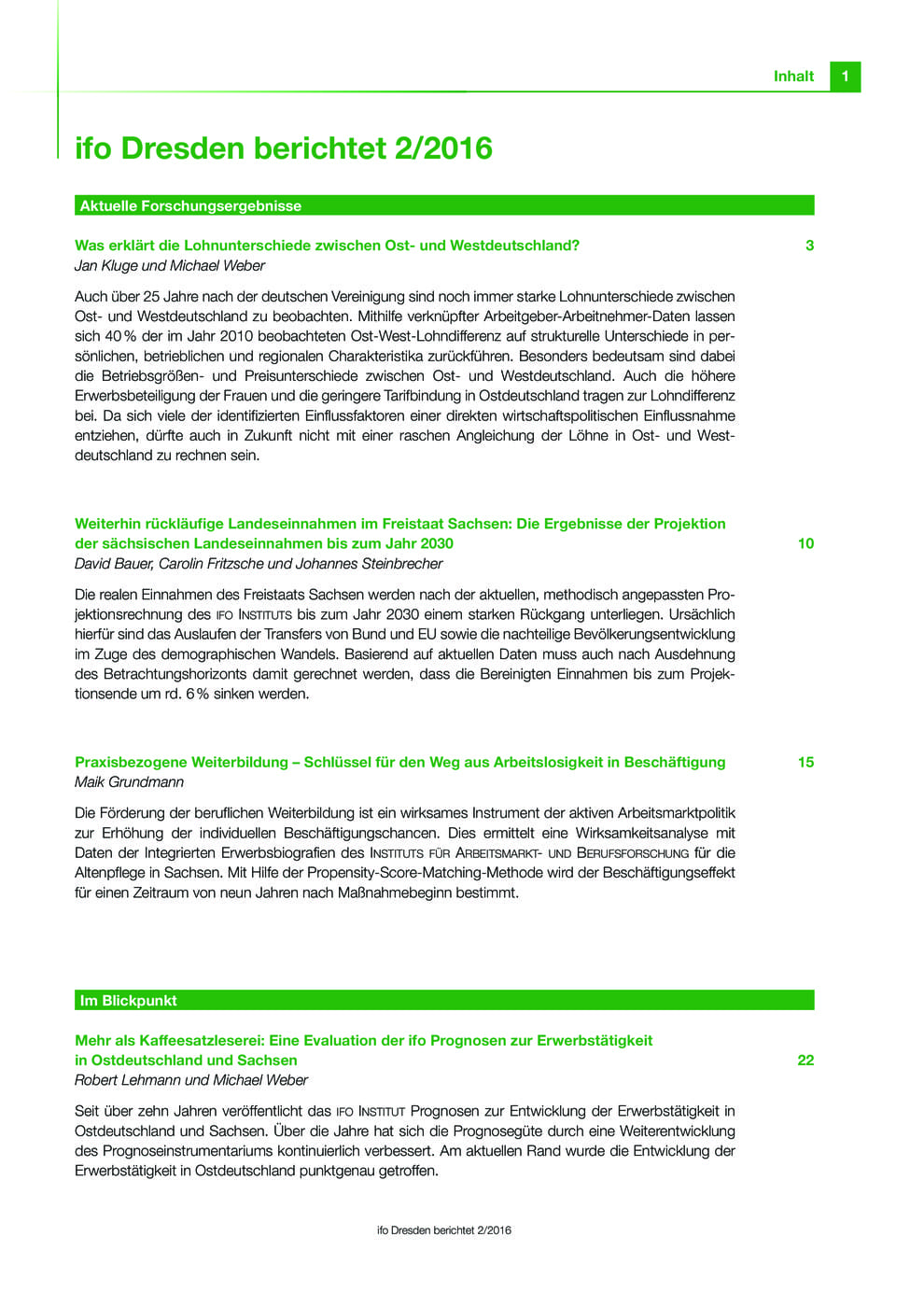ifo Dresden berichtet 2/2016
ifo Institut, Dresden, 2016

What explains the wage differences between East and West Germany?
Even more than 25 years after German unification, there are still strong wage differences between East and West Germany. With the help of linked employer-employee data, 40% of the east-west wage gap observed in 2010 can be attributed to structural differences in personal, company and regional characteristics. The differences in company size and prices between East and West Germany are particularly significant. The higher labour force participation of women and the lower level of collective bargaining in eastern Germany also contribute to the wage gap. Since many of the factors identified are not directly influenced by economic policy, it is unlikely that wages in eastern and western Germany will be adjusted rapidly in the future.
Kluge, Jan and Weber, Michael
Articles included
Was erklärt die Lohnunterschiede zwischen Ost- und Westdeutschland?
ifo Institut, Dresden, 2016
in: ifo Dresden berichtet, 2016, 23, Nr. 02, 03-09
Weiterhin rückläufige Landeseinnahmen im Freistaat Sachsen: Die Ergebnisse der Projektionder sächsischen Landeseinnahmen bis zum Jahr 2030
ifo Institut, Dresden, 2016
ifo Dresden berichtet, 2016, 23, Nr. 02, 10-14
Praxisbezogene Weiterbildung – Schlüssel für den Weg aus Arbeitslosigkeit in Beschäftigung
ifo Institut, Dresden, 2016
in: ifo Dresden berichtet, 2016, 23, Nr. 02, 15-21
Mehr als Kaffeesatzleserei: Eine Evaluation der ifo Prognosen zur Erwerbstätigkeit in Ostdeutschland und Sachsen
ifo Institut, Dresden, 2016
ifo Dresden berichtet, 2016, 23, Nr. 02, 22-26
Der ostdeutschen und der sächsischen Wirtschaft steht ein schwieriges Sommerhalbjahr bevor
ifo Institut, Dresden, 2016
in: ifo Dresden berichtet, 2016, 23, Nr. 02, 27-29
Dynamisches erstes Quartal für den ostdeutschen und den sächsischen Arbeitsmarkt
ifo Institut, Dresden, 2016
in: ifo Dresden berichtet, 2016, 23, Nr. 02, 30-32